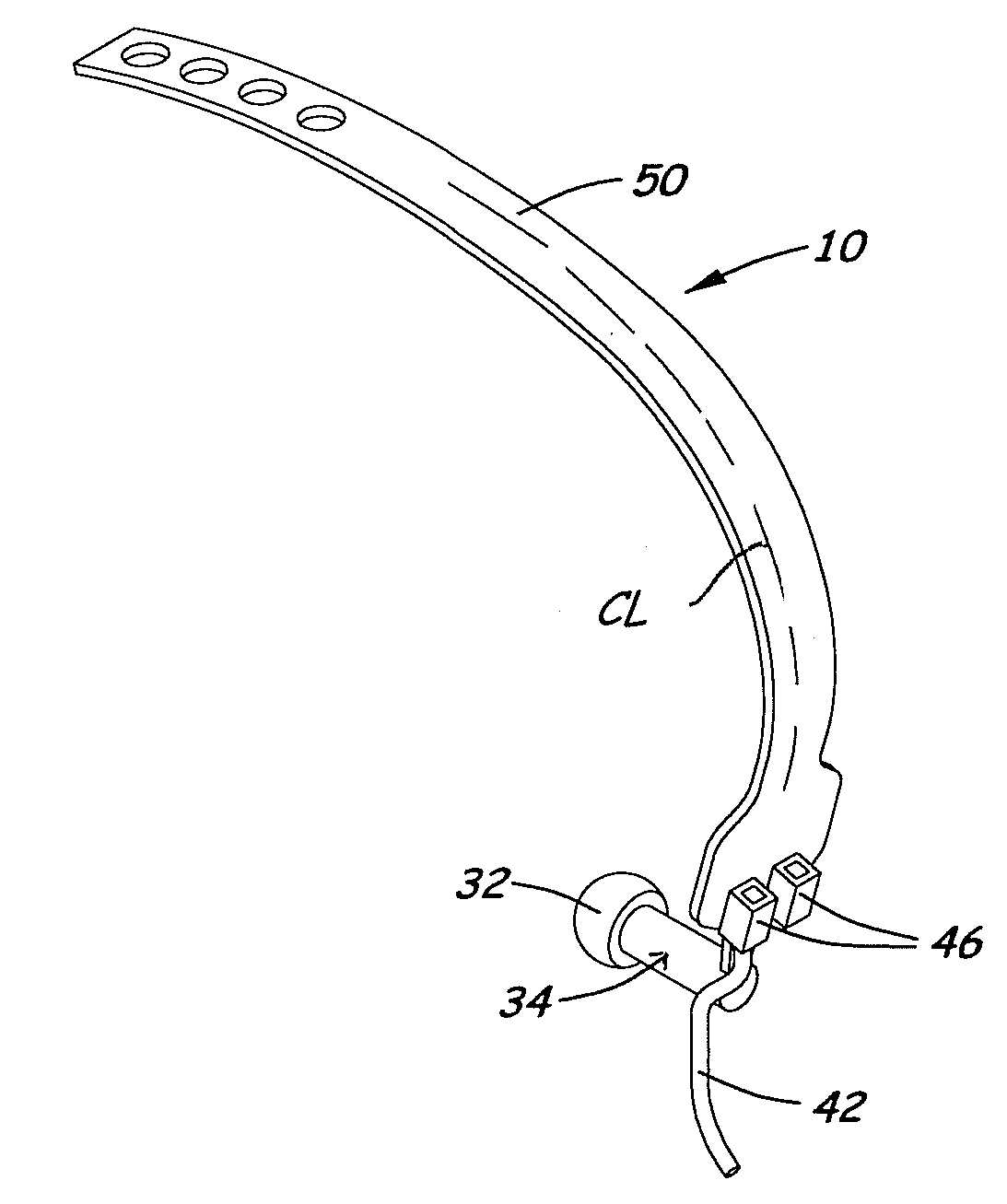Tools and methods for orthopedic surgery
a technology for orthopedic surgery and tools, applied in the field of tools and methods for orthopedic surgery, can solve the problems of skin, muscle and tendons, difficult and/or clumsy procedures, and requiring additional personnel in the surgery room, and achieve the effects of safe broaching/cutting/drilling, convenient access, and effective work
- Summary
- Abstract
- Description
- Claims
- Application Information
AI Technical Summary
Benefits of technology
Problems solved by technology
Method used
Image
Examples
Embodiment Construction
[0047]Referring to the Figures, there are depicted several, but not the only, embodiments of the present invention. FIGS. 1-3, 4A-C, 5A-D, 6A and B, 13A and B, 14A and B, 15, 16 and 19 portray preferred embodiments and use of the femur adjustment tool. FIGS. 7-12, and 17-19 portray preferred embodiments and use of tissue protector and guide tool. FIGS. 20-31 portray preferred embodiments and use of the invented bone clamp. Either one, two or three of the invented tools may be used to improve arthroplasty, especially hip and knee arthroplasty. The three preferred tools, and methods of using them, are discussed in detail below, and it should be understood that the individual tools are not necessarily limited to the embodiments shown and detailed herein, and that, while the preferred methods are described herein, that other uses for the tools, individually or various combinations of two or more, are included within the broad scope of the invention.
Femur Adjustment Tool
[0048]The preferr...
PUM
 Login to View More
Login to View More Abstract
Description
Claims
Application Information
 Login to View More
Login to View More - R&D
- Intellectual Property
- Life Sciences
- Materials
- Tech Scout
- Unparalleled Data Quality
- Higher Quality Content
- 60% Fewer Hallucinations
Browse by: Latest US Patents, China's latest patents, Technical Efficacy Thesaurus, Application Domain, Technology Topic, Popular Technical Reports.
© 2025 PatSnap. All rights reserved.Legal|Privacy policy|Modern Slavery Act Transparency Statement|Sitemap|About US| Contact US: help@patsnap.com



